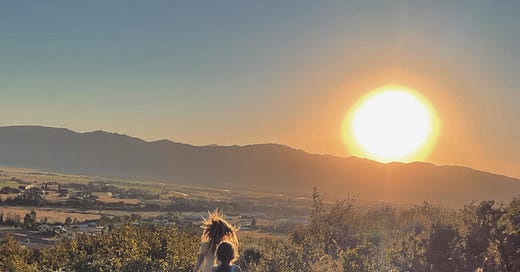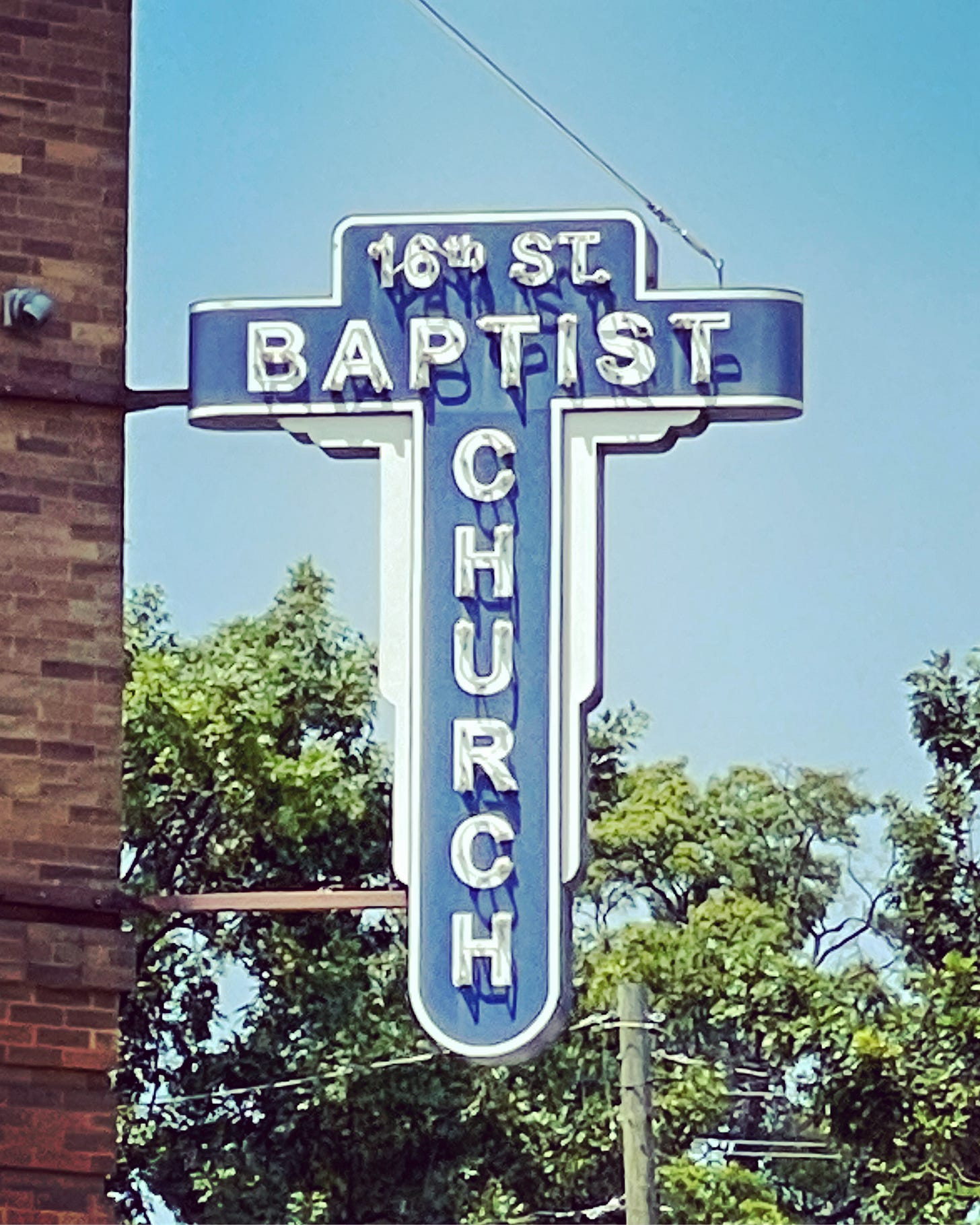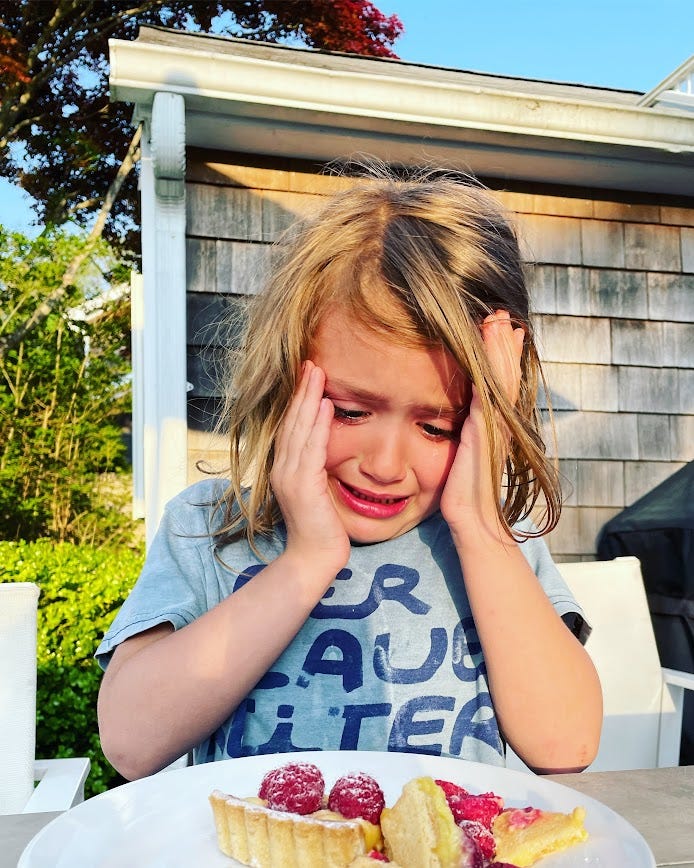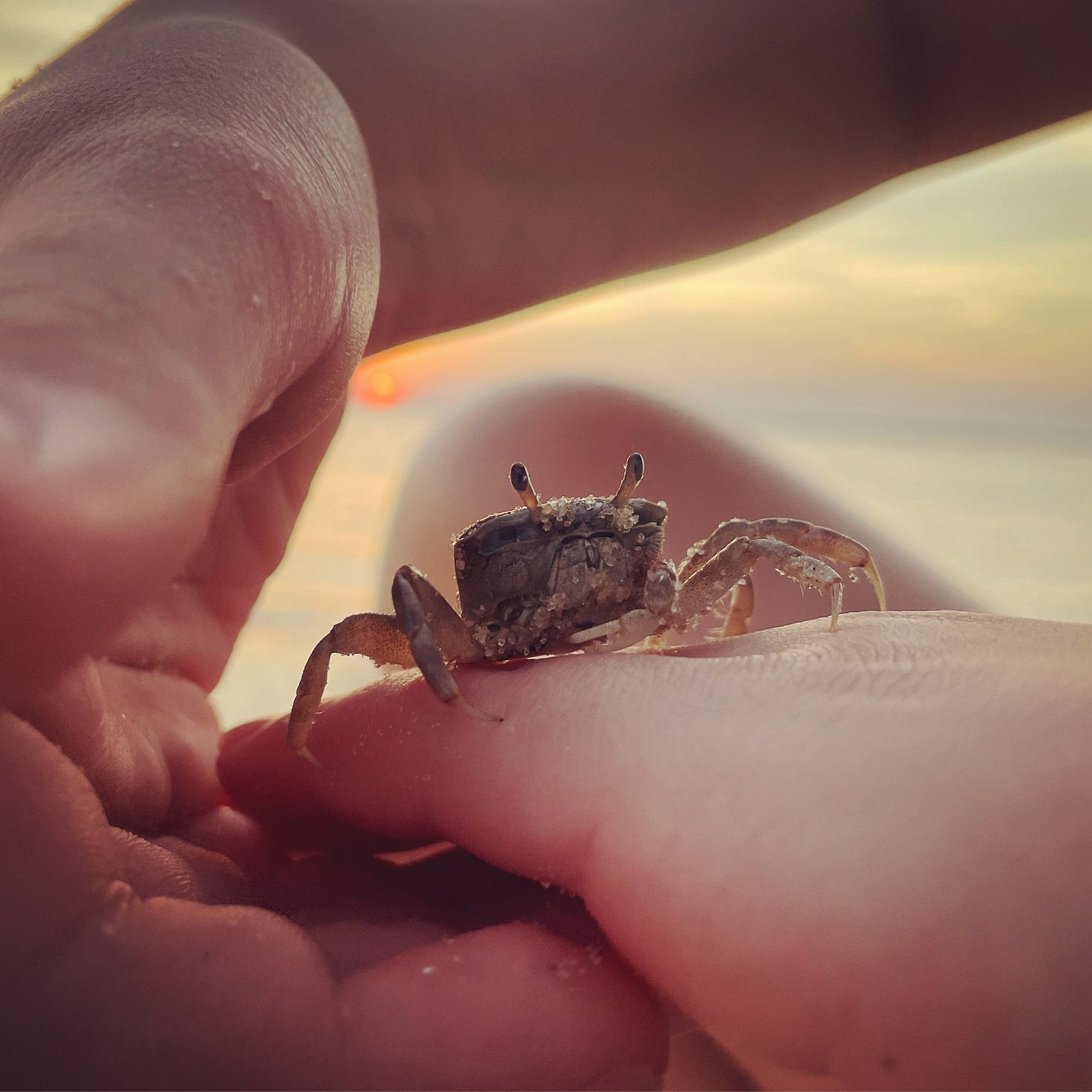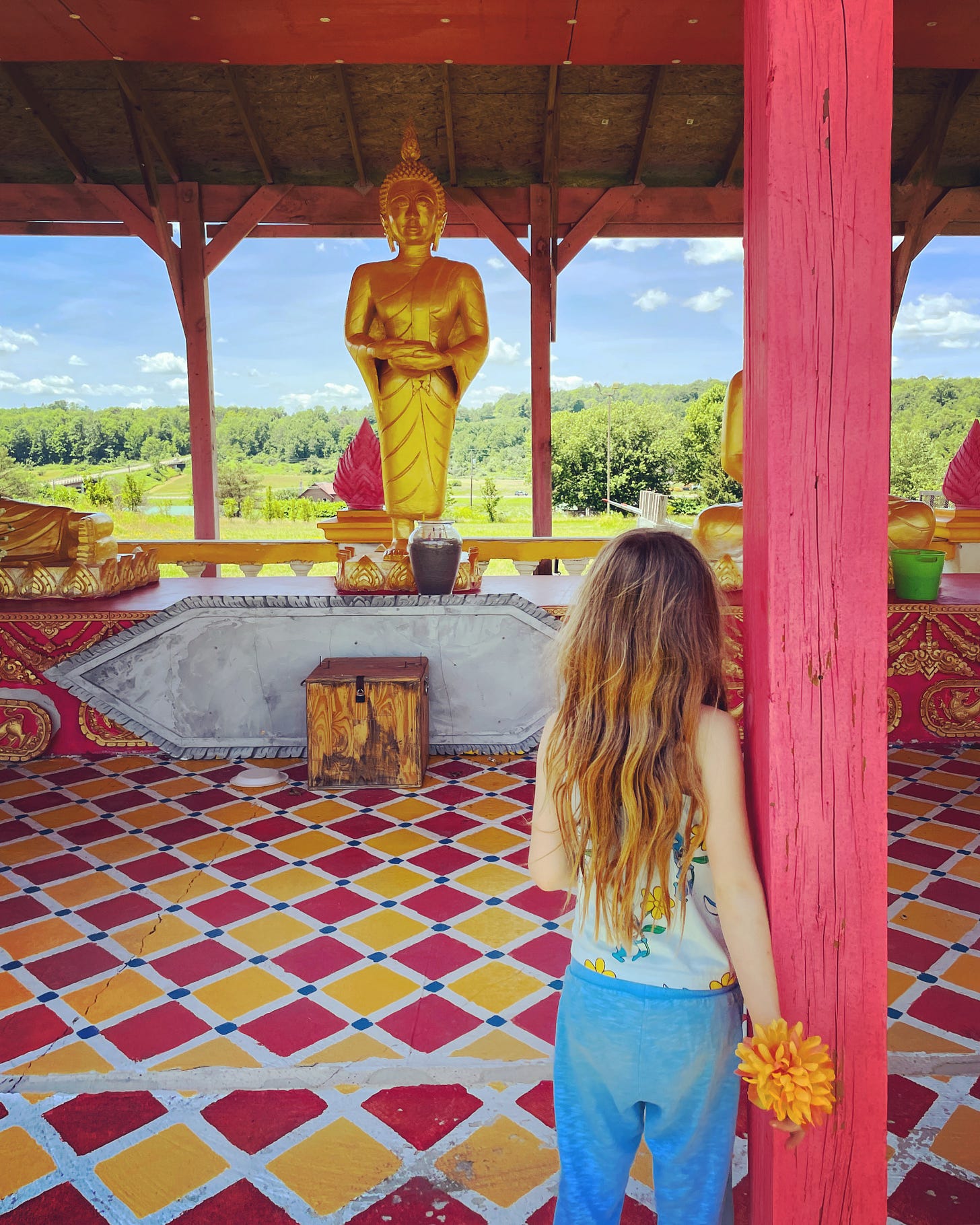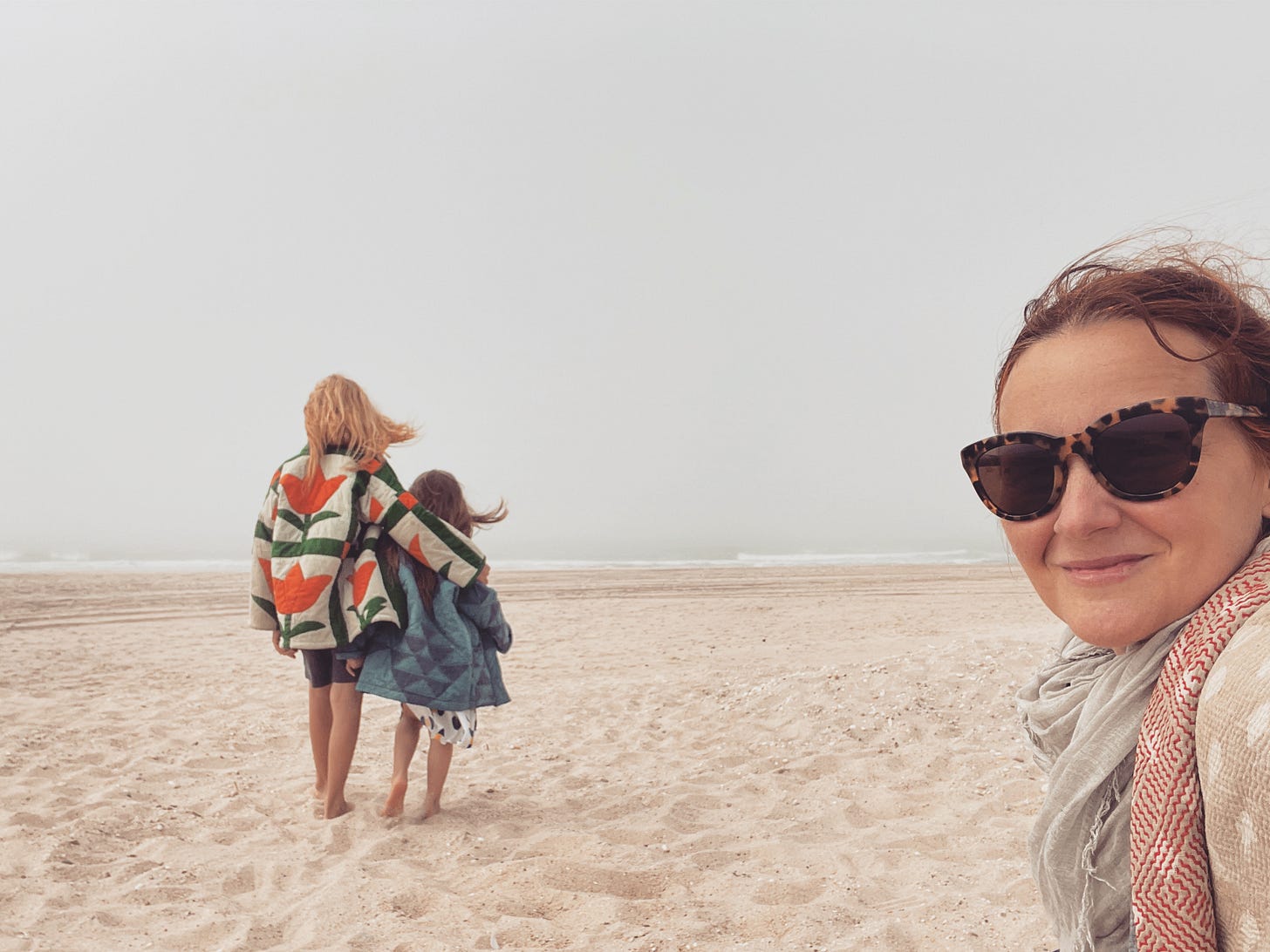If you are new or have landed on Tarantula: Authors and Art for the very first time, welcome to our monthly interview with our featured artist. Throughout July we have been so lucky to be witness to Nina Buesing’s traveling photos that gave our readers an opportunity to pull back from the business of life, sit still and breathe for a moment; make a cup of coffee or tea and join us for a chat with the artist. If a friend forwarded you this article, welcome; if you like it, share it or why not subscribe?
*manual
/ˈmanjʊ(ə)l/
adjective
relating to or done with the hands
noun
a book giving instructions or information
In case of photographer Nina Buesing, both definitions of *manual are valid: she uses her hands to create photographs that serve as a blueprint, a template for others, and especially for her own children. Whoever else is lucky to come across her work, is also welcome to follow the instructions that her photos illuminate.
Bathed in light caught in the most magical parts of the day, Nina’s photos follow her kids’ journey through their own childhood, and the environments they happen to come upon. These could’ve easily been hidden in some stuffy family album away from the view of the world, but the photographer chooses the digital path and the modern day way of sharing through social media hoping that others might also find joy in them.
As we look at the photos of her son and daughter running through crops, saving birds, playing with a bow and arrow, visiting museums and different kinds of vegan restaurants across the great American plain, we are reminded of our own private Idaho. We don’t just immediately scroll to the next image, but they make us stop and breath. We dream for a moment or two …
Nina Buesing’s photos create a beautiful handbook on how to live and love our planet in the 21st Century. As the world seems to be crumbling inside and around us, with the media focusing on hate, death, and fear, Nina entices us to come back from the darkness, to recognize our humanness and remember that our neighbours are also people. She reminds us to be kind to each other as well as that happiness is not something reached outside of us that one has to spend millions of dollars on. Our biggest hope is right in front of us, in the little pleasures found in the everyday moments of life.
Tarantula: Authors and Art: Thank you for joining us this month and sharing your work with us. I just went through your portfolio and I have to say that I felt so much joy looking at your photos. When drama and darkness and the value of shock sells in today’s world, I would like to start with asking how come you chose to capture the brighter side of life?
Nina Buesing: That is a very thoughtful question that is not so easy to answer. Let me think out loud and deconstruct your questions. It is true that drama, darkness and the value of shock sells. I take pictures for me of what I see around me and I do not think about an audience when I take a picture. But that is not to say that I do not want others to look. I do! And I am so happy to hear that you felt joy!
Like everyone I have my struggles, but I have also been fortunate. I do see all of the world. Bad experiences or news stay with me, change me. I appreciate those who share those & their stories, raise our awareness and contribute to change. It is important. And I do also take pictures of things that when you dive in, speak to horrible history. I hope that those who are open will notice those images as well.
I cannot control the world, but I can make choices in how I respond. Photography is choice. Photographs become memories and I want to feed and nourish (myself) with joy & knowledge. If I can give someone else joy or inspire them, that is beyond my wildest expectations -and yes, joyful.
Suffering is a an unavoidable part of life. I am interested in doing less harm.
I live in the US and the past few years have been extreme. During the height of the pandemic and protests, I considered censoring what pictures I posted even on my private social media account because I felt that my moments of joy must be seen as tone-deaf. But taking pictures centers me, which makes me a better functioning human, more ready to contribute, it gives me fortitude; it is meditation that allows me to practice gratitude. I knew that for at least some friends and family it was joyful to see my images and so I decided to keep sharing; it also allowed connection during a very isolating time.
When we went on our road trip last year, I shared some pictures with a friend and he said that if he was in the middle of nowhere, Indiana or Iowa, all he would see is ugly chainstores. I moved a lot as a child, and my father always reminded me that there are nice people everywhere. And I do see the nice people, the nice moments - and I see the history too.
But perhaps the bottom line is that my perspective is that of a mother, and I am teaching my children to think and how to perceive & navigate the world.
Amen. Thank you for such a thorough answer. I hope you continue to capture these moments as we all need more hope. I want to travel a bit in time to your beginnings in photography. How did photography come into your life and when did you know that this is the right medium for you.
When I was about 6 or 7 years old a neighbour gave me a 110 mm snapshot camera, it was a promotional gift. I think that was the beginning. I always liked art and photography had instant gratification which held much appeal. I also liked that photography is not precious like a painting can be. That being said I am still not sure if photography is the best medium for me!
Does photography have the same meaning for you when you started or has it changed?
Yes. And I still do not care about fancy cameras. I am not about the tech. And I like that today, in the digital age, the instant gratification is hyper immediate. Sometimes I miss the analog age. A print created from film and in the darkroom is a beautiful grounded warm object. But perhaps I am also nostalgic about my youth spent in studios, darkrooms & communing with like minded people.
You mentioned two things now that are very present in your photos. Since you became a mother, your own children are often the center of your photographs. Is it about reliving your own childhood through them (nostalgia) or capturing this moment (youth) for memories to come?
I had a great childhood. I am grateful for it. So yes I think of it fondly and wish to give my children the same. It is a different childhood but hopefully one that will give them a good foundation. Yes, my pictures are also about capturing memories. Photos reenforce memories and help populate my brain with positive thought. Before I had children of my own, I had nephews. I had friends with children. I always photographed them too. Children are funny and they are enthusiastic and present. My pictures are about that, not necessarily about the individual, it is more a manual about how to make the best of life.
I should also add that I love that you don’t shy away from your own children in your work. In today’s world, women artists are still nervous about embracing motherhood because they are afraid that they won’t be taken seriously. I would like to hear what you think about this and how can we move forward?
I became a mother (to children) late in life. It was very deliberate and after much consideration. And I decided I was going to go all in. You get me, you get my children. They are a part of every aspect of my life now. My images are an extension of what I know and my experience, so I cannot not photograph my children. I make pictures for me, I do not have the pressures of having to make a living through my art. But yes, I know what you are talking about. I work as a freelancer. And sometimes I cannot make that meeting or this event because I have to be available for my children and I try to structure my paid work around my children’s needs. They are my priority, but when I verbalize that, I am always aware how this might be perceived, but I made the decision to vocalize it anyway, to normalize it. It is important to speak up about it, explain, remind everyone how important parenting is and how it affects society.
What does freedom mean to you? I ask this because your photographs also capture a great sense of freedom.
Freedom means having a choice about how I get to spend my time.
You recently wrote on instagram that “Joy Is Resistance” under the photo of a child holding a crab in his hand in response to the last few weeks in the USA (abortion made illegal). It is not often that we associate these two words together. Can you please elaborate? Any ideas on how can we resist more?
First, I have to say that the idea of “Joy as is Resistance” is not an original idea. Sojourner Truth, Audre Lord, Alice Walker and others have verbalized this idea and practiced it. It has been adopted by many who struggle. When I first heard joy described as a form of resistance, I knew it to be a truth. The power of joy is also discussed and explained in psychology. Joy can help cultivate resilience. Joy can come from things you enjoy doing, spending time with those you love. Having a community, feeling productive, observing beauty, exercising, asking or making pictures, playing an instrument or listening to music. Learning new skills, helping others, traveling, cleaning your house, gardening, resting, cuddling with your cat or walking your dog, cooking. And it is important to lean into that. Suffering is part of life. Joy can help you recharge, reenergize, focus. And joy does not just benefit yourself - it benefits the world at large. This idea has been around for a long time, for example in Buddhism, metta or loving kindness practice, speaks to how happiness and joy can transform the world. To bring this back to motherhood, if you can find joy, share joy, it will benefit your children. And children are the future.
You also work at the Tricycle Magazine in NYC, the Buddhist review as an Art Editor. Does working there also influence your “mantra” about bringing joy into your photographs?
My core relationship to joy comes from my parents. They grew up during the war and have known true hardship, but they are always grateful and joyful. My conscious thinking around joy comes from the art world, and probably started in college with a lecture by Dr. Deb Willis. I would not describe myself as a Buddhist, but I do benefit from reading extensively about Buddhism for work. I agree with many ideas in Buddhism and it has helped me navigate life better and perhaps more importantly it has helped my understanding of kindness and its impact. I also meditate, which helps me being present and as a result feel joy. I also think it is important to share joy. One pillar of Buddhist practice is Sangha and I am fortunate to have a community to sit with, led by the incredible Gala Narezo.
Let’s talk about travel that is also very present in your work. What are your first associations with the word travel?
Freedom :)
We have been fortunate this month to follow you and your family through your photos on your quest for freedom while road tripping across the USA. One of your Insta followers wrote under one of your photos “It is always magic hour in front of Nina’s lens” and I find that to be true. Talk to us a little bit about your process, how are you always able to capture these perfect beautiful moments since they are not staged.
I think this is where the influence of Buddhism comes into play. I think you have to be present to catch those moments. And you have to be open to whatever you are experiencing – good or bad – and let it flow. My photography is just paying attention and pressing the button. I love taking pictures with my phone for that reason. The phone is small and always in my pocket, it does not get in the way of being in the moment (well, not for me anyway). Meditation teaches you how to work with your mind, it teaches you focus, photography for me is medtitative.
Any advice for our readers on how they can use their phones or cameras to photograph their children on their own trips and have beautiful photos? For example, the light in your photos is often magnificent.
Besides being present, I would say take a moment to read a manual! I do portfolio reviews , and sometimes I get photographers who are already professionals and they just want an editor’s eye on a project, other times I get beginners or hobbyists, I enjoy talking to all. But often with beginners the best advice I can give is to lean into the technical. Much like a musical instrument, practice is required for photography.
Thank you for bringing these wonderful photos into our lives and inspiring us to search for our own joy. If any of our readers would like to find out more about you and your art, where can they find you?
Thank you so much for your interest. I much enjoyed this conversation. Please follow me on Instagram at magnoliasandfrogs or visit: www.ninabuesing.com

